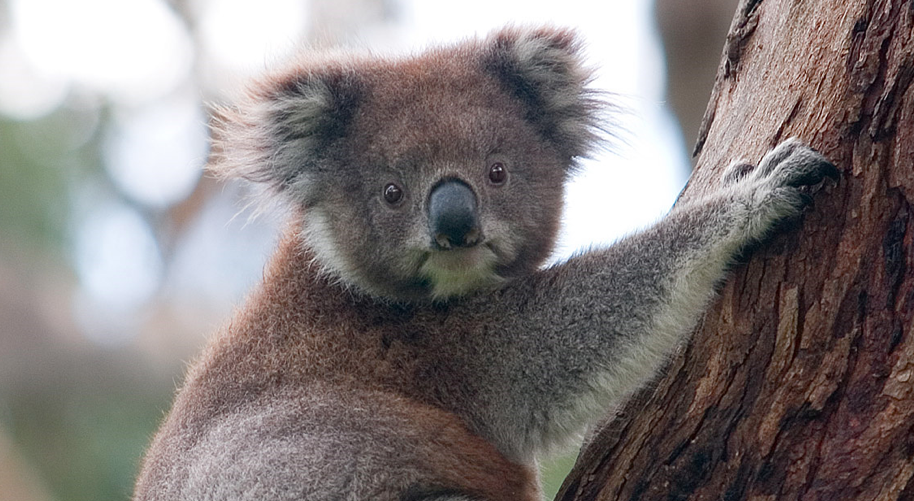We're open daily! View holiday hours
Science News
Loud Koalas
December 19, 2013

By Jami Smith
Koalas may look like cuddly little teddy bears but, as scientists have witnessed, during mating season they sound like roaring, belching monsters. And one group of researchers may have figured out why.
It appears that male koalas sport a unique sound-producing organ never before seen in a land-dwelling mammal.
Benjamin Charlton and his colleagues of the University of Sussex in Brighton, England, have discovered that male koalas have an extra set of vocal cords, called velar vocal folds, located outside the larynx, between the oral and nasal cavities. This novel organ gives the slow-moving marsupials their very large sound. The study was published in the journal Current Biology earlier this month.
During breeding season, male koalas produce low-pitched ‘bellow’ vocalizations that are about 20 times lower than would be expected for an animal weighing in at eight kilograms (about 17 pounds) – a sound more typical of a beast the size of an elephant.
These vocalizations are produced as a continuous series of sounds on inhalation and exhalation, similar to a donkey’s braying, Charlton says. Inhalations sound like snoring, and exhalations sound like belching.
In 2011, Charlton’s group reported that koalas probably bellow to attract females and to intimidate other males. Large koalas produce deeper resonances than smaller ones, and even the smallest males produce resonances that make them sound larger than they really are. During the 2011 study, the researchers also discovered that koalas have a descended larynx, which makes their vocal tract longer than expected. This could account for some of the extra bass, but not all of it. So they dissected 10 deceased male koalas to investigate further. (According to the study: “No animals were killed expressly for the purpose of this study.”) That’s when they found the extra set of vocal cords.
This is the first time that an organ specialized for sound production other than the larynx has been found in a terrestrial mammal, says Charlton. The only other similar example is in toothed whales, which have phonic lips that generate clicks used for echolocation.
Charlton says that he and his colleagues will now look more closely at other mammals to find out whether this vocal adaptation is truly unique to koalas. They also plan to focus on female koalas: “Female koalas have also been reported to bellow, but do so much more rarely than males. Investigations of female koala vocal anatomy, therefore, are now needed to determine whether they also possess velar vocal folds,” the report says.
You can see and hear a koala making its big noises here.
Jami Smith is a science geek-wannabe and volunteers for Science Today.
Image: Diliff/Wikipedia